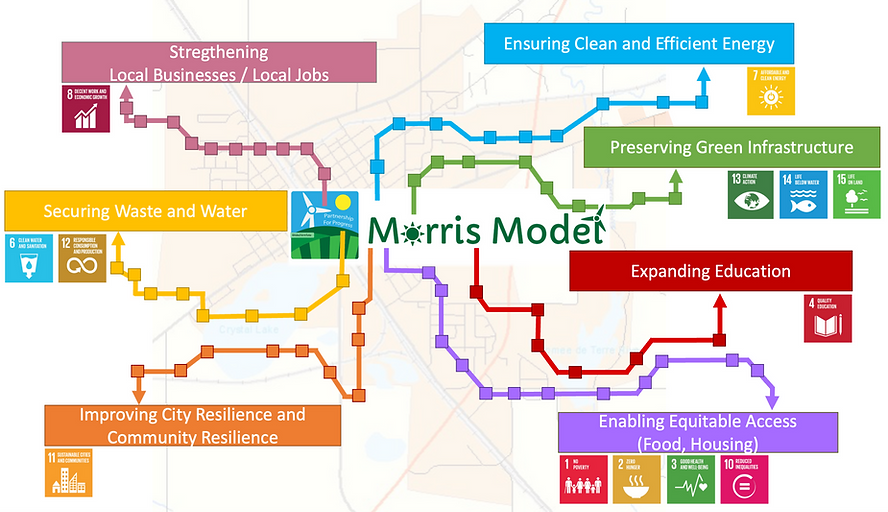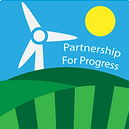
Starting in the summer of 2023, Griffin Peck, the Morris Model coordinator, initiated a planning effort to update and expand the scope of our sustainability strategic vision for the Morris community. Supported by community resilience funding from the West Central Initiative, Griffin collaborated with the core Morris Model team, community planner Guido Wallraven, and the Institute on the Environment to plan two weeks of workshops and meetings with local leaders and stakeholders.
The initial strategic plan established three ambitious goals for the community to aspire towards: producing 80% of our energy from local renewables, reducing overall energy use by 30%, and eliminating landfilling in the county. Guided by these overarching goals, the first strategic plan focused on Energy, Transportation, Waste, and Education as sub-goals, with model partners each setting goals for their organizations and operations. The first plan also generated a list of 100 aspirational projects to help catalyze progress towards our larger goals.
Five years on, the model has made significant strides. Despite contending with the global COVID-19 pandemic and its associated disruptions to supply chains, Morris Model partners completed 34 projects, with an additional 16 already in progress. The county launched a composting program to further reduce MSW, and the city installed renewables to offset 20% of city building energy use. UMN Morris achieved carbon neutrality for its electricity consumption. UMN Morris and WCROC collaborated to install solar photovoltaics on pastures grazed by the research farm’s organic dairy herd. The West Central Research and Outreach Center is now at the forefront of ‘Green Ammonia’ production, receiving funding from the DOE to expand the facility to produce 1 ton per day.
In addition to these significant accomplishments, the United States recently passed the largest investment in climate mitigation and adaptation of any modern nation. The Inflation Reduction Act and the Infrastructure Investment and Jobs Act will invest over $365 Billion to reduce carbon polluting emissions and other greenhouse gases, and to invest in community climate resilience and adaptation measures.
Given the immense progress of the Morris Model, combined with the dramatically expanded funding for future projects, it was clear that an updated and expanded strategic plan would help prepare the Morris Model and the wider community to attract federal funding to our community.
Inspired by regional and state leaders, Griffin expanded the scope of the Morris Model through framing with the United Nations Sustainable Development Goals (SDGs). The clear, accessible language of the SDGs and their broad appeal helped the model expand its reach. Drawing inspiration from the 17 goals, Griffin distilled 7 focus areas for the updated plan. New areas of focus include equitable access to food, housing, and health services, increasing our investments in green infrastructure, and cultivating green businesses and jobs.
After the initial two weeks of workshops and local stakeholder meetings, Griffin and Guido worked together to write the final plan. Special thanks to Guido Wallraven for his willingness to help the Morris community and the Morris Model think big. To the Morris Model core team including Troy Goodnough, Bryan Herrmann, Eric Buchanan, Mike Reese, Doug Reed, Blaine Hill, and Syd Bauer for helping to coordinate logistics throughout the process. To the wider Morris Model partners including UMN Morris, UMN WCROC, City of Morris, Stevens County, Morris Area Schools, Stevens Community Medical Center, and the West Central Minnesota Climate Network for their participation in building a stronger sustainable rural vision for the community. To the West Central Initiative Foundation for their financial support, and to president Anna Wasescha and community planner Mark Kaelke for their input throughout the process.
